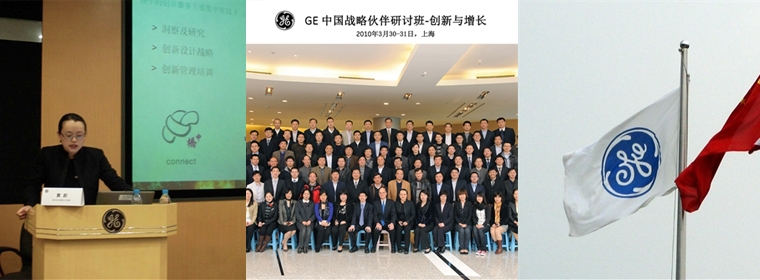GE China, invites CBi to help gain insight about design management

CBi set out its “Five Elements of Innovation” at GE's China Executive Program in Innovation and Growth Workshop in Shanghai on March 30 - 31. More than 100 leaders, high level managers and professors from various industries attended this workshop.
Through the Five Elements of Innovation and the ancient Chinese principle of Wu Xing, CBi helps clients improve performance and design management. Wu Xing describes the interaction of elements in the natural world and applies it to a company's working practices.
By drawing parallels between five core concepts – Leadership, Creativity, Culture, Communication and Strategy – and the primordial elements of Wu Xing, CBi uncovers the interrelationships between these concepts, and how each contributes to success.
Demand for CBi's Five Elements of Innovation training program has been strong, and only continues to grow as more companies have seen clear, demonstrable benefits and results.
GE, which traces its beginnings to the great inventor and businessman Thomas Edison, invests about $1 billion annually in training and education programs to develop some of the best leaders and most widely practiced business techniques. The company's John F. Welch Leadership and Development Center, a 53-acre corporate learning campus in Crotonville, New York State, was the first training center of its kind in the world when it was founded in 1956.
“GE has maintained its position as a leader in innovation through the importance it places on long-term training,” said Cathy Huang, director of CBi. “We are thrilled that a company of GE's caliber has recognized that CBi's Five Elements of Innovation provides important insights that even the world's largest company can draw upon.”
For each of the Five Elements of Innovation, CBi provides in-depth training. Strategy, includes customer value proposition, product and services planning, and the influence of organizational strategy on innovation. Leadership includes managing creative teams and the process of leading innovation through leadership skills. Creativity provides inspiration and visualization, driving and motivating creativity, using the current influence of Chinese traditional culture. Culture creates an inspiring environment, teambuilding for creative talents, and establishes effective values in creative organization. Finally, Communication includes innovative writing, presentation skills, and interpersonal skills.

